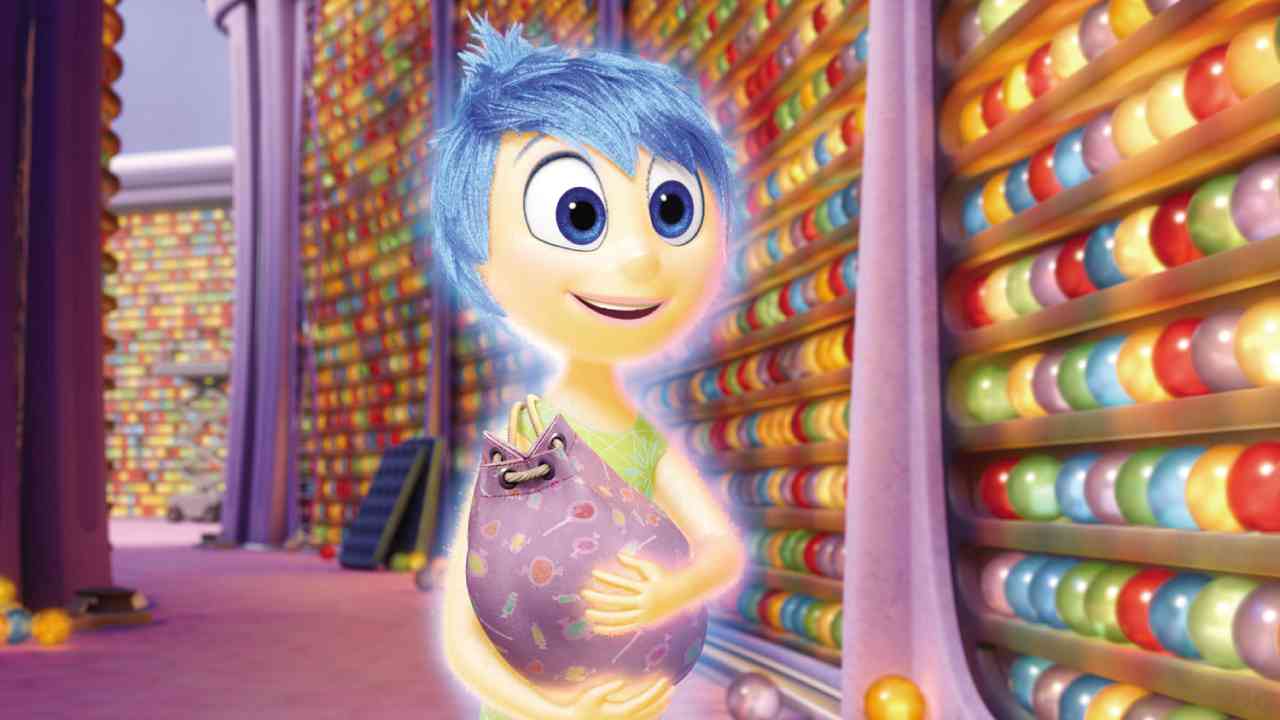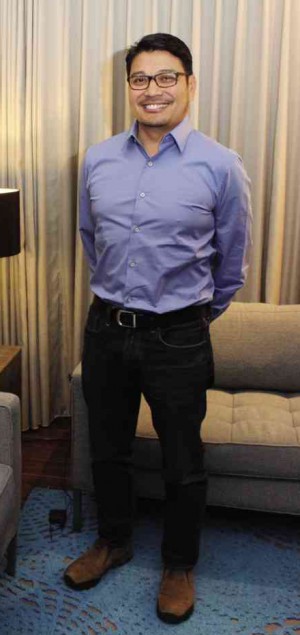UST alumnus codirects Cannes-bound Pixar film
LOS ANGELES—Watching Pixar’s “Inside Out” and then seeing the end credits which list Ronaldo “Ronnie” del Carmen as codirector made me proud of my fellow Filipino and University of Santos Tomas (UST) alumnus. In fact, I was misty-eyed, as the credits rolled in the darkness of The Colosseum at the Caesars Palace Las Vegas.
What makes director Pete Docter and codirector Ronnie’s achievement in “Inside Out” especially noteworthy is the subject matter they chose to tackle—how the human mind works, specifically that of an 11-year-old girl, Riley.
How do you illustrate that in an animated film? The two filmmakers came up with an idea that’s fun and inventive. Riley’s primary emotions—Joy (voiced by Amy Poehler), Sadness (Phyllis Smith), Fear (Bill Hader), Anger (Lewis Black) and Disgust (Mindy Kaling)—reside in Headquarters, which serves as the control center in the girl’s mind.
Owing to its complex topic, “Inside Out,” produced by Jonas Rivera, is probably Pixar’s most “grownup” feature since “Up.” Coincidentally, both Pete (director) and Ronnie (storyboard supervisor) worked on “Up,” the first animated film feature to open the Cannes International Film Festival (2009). Pixar returns to Cannes this year with Pete and Ronnie presenting “Inside Out” as an out-of-competition selection.
After this recent screening, Ronnie sat down for an interview in the labyrinthine backstage of The Colosseum. “We just saw the movie with you guys,” said Ronnie, just as moved as I was upon finally seeing the movie. Over five years, I asked him for updates about “Inside Out” every time we saw each other.
Article continues after this advertisementBespectacled and boyish-looking, Ronnie majored in advertising at UST’s College of Fine Arts and Design. His brothers, Louie and Rick, who are also successful animation artists in the United States, graduated from UST, too.
Article continues after this advertisementThe Cavite native said he and Pete, in telling the story of Riley, who is uprooted from the Midwest when her dad gets a new job in San Francisco, drew from their own experiences as dads who moved their families to work in Pixar, whose headquarters are near the famous city by the bay. This move triggers a lot of various emotions—and the Headquarters go on overdrive—as Riley struggles to cope with the new place, classmates and hockey teammates.
Ronnie, who is married to Tess whom he met at UST, is one of the featured subjects in my book, Anvil’s “My Filipino Connection: The Philippines in Hollywood.”
Below are excerpts from our chat:
Can you talk about how you felt when you saw your name on the end credits?
I am always amazed that my name is up there. I’ve been working in animation for almost 25 years. It is quite an honor to direct a movie. It is humbling because all of our work is done behind the scenes. You don’t see us. Our stories are manifested in these characters, the story and the movie.
I would like my parents, my kids, friends and people back home to see it. I feel that I am graduating to another level. Even as a kid, I loved and admired people who work on these movies. I want to tell everyone I care about, “Look, I made one.” And Pete Docter has invited me to be his codirector. I am very proud of this moment as a Filipino.
“Inside Out” is the second Pixar film to go to Cannes. The first one was “Up.”
I am very proud that it is going to Cannes. I worked on both. I was the story supervisor in “Up.” I am very lucky to be involved in these productions.
How did you get involved in this project?
After finishing “Up,” Pete and I worked on little things and then he invited me to be his codirector. It’s just that simple. We were at the atrium at Pixar. We were just sitting around. We had been talking about what the movie would be about a few weeks before and then it became a concept that Pixar would be making.
Pete told me, “I would like you to codirect with me.” I said, “What, that is pretty big. I don’t really know how people get that job.” He said, “The director gets to choose.” I told him, “The answer is yes. My next question is, what exactly do I do?” I found out what I was going to do when I was working on the movie.
We talked to Pete and producer Jonas Rivera and they said you contributed a lot to the movie’s emotional aspects.
That is pretty good. I think that is what I did for the movie. I do a lot of things in the movie. I create moments. I design. I write and work with Pete. Together, we figure out where the story is going, how the characters are progressing.
I am a partner to Pete. I am there when he needs me. I go in advance to the other departments and try to figure out if he wants to move on and do that. It’s been a great run.
Pete and Jonas also said one of your main contributions to the film was concretizing their abstract ideas.
It’s a fun way of working with Pete. We would talk about the story. We would say, “You know what that means. If you do that, the character has to change.”
When we are talking to each other, we tell each other stories. The story of “Inside Out” was started by both of us talking. While we were telling stories to each other, he would say, “I want to pitch this. I want to write down what we talked about.”
I would peel away. I want to experience the character, this story. I want to see the characters, find out what they feel and see if we can feel for them. I try to make and write the moments and see if it feels like a movie, if it is show time. Then we say, “OK, that feels like something. Let’s keep looking at this direction.”
I am usually the first person to try out new directions because I can do it quickly. We talk about it. From there, we have something to work on and then we would build on that.
When you were peeling the main character in “Inside Out,” did you tap into your own emotions?
Pete recalled his growing-up years in Minnesota, while I recalled my childhood in Cavite. I would tell him how my life was when I was growing up there. We also have kids so we talk about our experiences as parents. A lot of our experiences show up in the movie.
I moved my kids from the Philippines when they were only 8 and 6 years old. I saw how difficult it was for them even though they were very brave. After living 10 years in LA, I moved them again to the Bay Area where Pixar is. It was not a good time for them because they were starting middle school.
My daughter would come home crying. During lunch, nobody would talk to my daughter. Not because of anything else but because she was new. It was hard to make friends. It broke my heart. I thought, “What did I do?”
That kind of story is universal to all of us. Children are not prepared for this emotional challenge of moving. It is hard for parents to see their children in pain. You want them to be happy but you don’t know what to do. One wish a parent wants is to keep his kids happy. We can relate to Joy in the movie who wants Riley to be always happy. But that is not possible.
In making all these Pixar films, how do you connect to your inner child?
That is easy because in animation, we are goofy all the time. We always draw cartoons and caricatures of each other. It is easy for us in this industry to remain childlike but you still have to be mature enough to hold a job and make movies that take five years.
Are your kids following in your footsteps?
Both my kids draw. My daughter works in film production in San Francisco, while my son is a paralegal. But he DJs on the side and makes documentaries for himself.
What was it like working on a film for five years?
I have been telling people it’s like I have been holding a secret for five years. It is a relief that it is finally finished and it is going to be shown to the world.
But five years is a long time to be making anything. I am very proud of this accomplishment. It is the hardest movie I have worked on. I wish movies are easy to make but when the result is like this, I would do it all over again.
When was the last time you visited the Philippines?
I went early this year. We had our vacation in Palawan. It was wonderful.
Did you visit the UST campus?
I love going back to UST. The school looks great. The kids are beautiful. You can see all that hope and joy in their faces. My wife and I walked on the grounds. We met there. We were classmates. We walked on the same streets. We had big smiles on our faces. We felt like it was just yesterday….
I visited the College of Fine Arts building. Everybody was busy doing their plates which were probably due that day. It felt like a homecoming of sorts.
If you were to hold a master class, what advice would you give to kids?

DEL CARMEN had a blast working with “Inside Out” codirector Pete Docter (center) and producer Jonas Rivera (right). photo by Ruben V. Nepales
I have been going back home to the Philippines for over a decade now. I have been holding a lot of talks in universities, in the animation industry, with filmmakers and animators. We went to the Asian Institute of Management and we talked about the creative challenge in Southeast Asia. I went to Naga where I met Fr. (Danilo) Isidro who has a feature animation course in 3D.
The stories they are telling are global. Our stories are being told out there in this global campfire of storytelling. Animation is just going to be one. We are not as present as we should be. We should not tell our stories as if we were from a different country or culture. We need to tell stories about ourselves, our families, our culture and let that join all the stories that are being told in the world.
But if we don’t start telling those stories now, no one is going to hear them later on. We need an accumulation of stories. I don’t care how short or how long or what medium it is. It could be books, YouTube channels or something that you just made yourself with a ballpoint pen.
The reason why I got better and why Pixar hired me is because I told stories through these products that I am involved in. Finishing my stories and showing them to people and getting feedback. People will tell me that my stories were not good enough or they could be better. You learn and you get better at telling stories.
You can’t make it perfect if you don’t keep on writing stories. Each time I tell a story, I get better. If you don’t tell stories and you just aim to be great right away, you are going to fail. Tell the small, medium and big stories. Show them to your colleagues and show them to the world. People will realize that it came from a real place, from a real person.
We are always worried about budget. And that is a valid concern. People in the Philippines are very resourceful. We can tell stories with just the iPhone. We can make stories by using little drawings or with puppets. We can get used to doing that because one day, we will be ready to tell bigger stories.
That is the best advice I can give as a professional. It is a secret. The reason I got better was not because I was great or a genius. No one, not even people I work for at Pixar think like that. We are not here to be geniuses. Pixar’s philosophy is, we are not geniuses. We tell our stories over and over again. We learn how to be better in telling stories. We keep the parts that work and take away the parts that don’t work.
That is what I wish I could teach.
What’s the advice you’d give to your younger self?
I would tell him not to be disheartened by the challenges of life. There was a lot of bad luck that happened. We were very poor for a long time. Don’t stop drawing or writing just because nobody tells your story. Just tell your stories to your brothers. We tried to make each other laugh. Which we did. All of my brothers work in animation, too.
Sometimes you get sad about your fate. I don’t have control over the luck my family had. But I have control over continuing to learn my work. Even if you don’t have anything to eat for lunch. Even if it feels that tomorrow is not going to be an improvement of today.
The simple act of having a blank piece of paper…and make that mark on the paper and tell a story. I wish I could make him believe that that matters. But there was no one there to support me. So if I had someone—as a challenge to all of us who are older, that would have been good for someone to tell me. Life is hard. That piece of encouragement I know—it is good and it is going to improve. You have to stick to what you love doing.
What’s next for you?
I don’t know what is next for me. I am at the mercy of good fortune, good collaboration and the best wishes that the world could send me. If I really have good luck, I will be making movies until the day I die.
And I think you will.
I hope so.
(E-mail the columnist at rvnepales_
5585@yahoo.com. Follow him at https://
twitter.com/nepalesruben)

